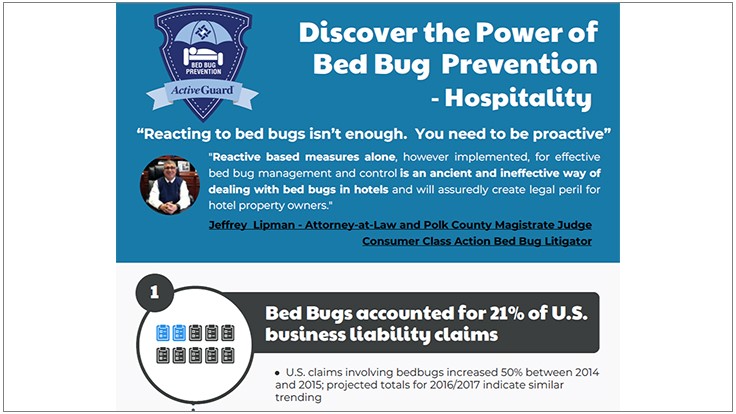Past The Spray: Checking Out Advanced Techniques Used By Pest Control Professionals
Past The Spray: Checking Out Advanced Techniques Used By Pest Control Professionals
Blog Article
Developed By-Vazquez Henningsen
Are you tired of relying solely on sprays to handle bugs in your house or office? While sprays can be effective, pest control professionals have developed innovative techniques that go beyond simply splashing chemicals.
These techniques not only provide more efficient and resilient services, however additionally focus on lessening the use of dangerous pesticides. By checking out these innovative techniques, you will uncover an entire brand-new globe of insect control techniques that are not just reliable, however additionally eco-friendly.
So, are you prepared to take your bug control game to the following degree?
Integrated Bug Administration (IPM)
If you're trying to find a reliable and environmentally-friendly method to pest control, Integrated Bug Management (IPM) is the solution you need. IPM focuses on lasting prevention and monitoring of insects, instead of simply relying upon pesticides. This method considers the details demands and actions of insects, along with the surrounding environment.
By using a mix of techniques such as biological control, environment control, and targeted pesticide usage, IPM aims to minimize the reliance on chemical treatments and decrease harm to non-target microorganisms.
One crucial element of IPM is keeping an eye on and recognizing bugs properly. This entails frequently checking and analyzing the pest population, as well as recognizing the details varieties existing. By understanding linked web-site and habits of bugs, pest control specialists can develop targeted approaches to disrupt their life cycle and lower their numbers.
Another crucial aspect of IPM is making use of non-chemical control approaches whenever feasible. This can consist of physical obstacles, such as installing screens or sealing fractures and openings, to avoid parasites from getting in structures. In addition, cultural practices, like correct hygiene and waste administration, can aid eliminate pest food sources and reproducing premises.
When chemicals are necessary, IPM concentrates on utilizing them judiciously and as a last resource. This means choosing the least hazardous and most reliable choice, using it precisely and only to affected areas, and following all security guidelines. By minimizing pesticide use, IPM minimizes the prospective dangers to human health and wellness and the setting.
Biological Control
To additionally boost the efficiency of Integrated Insect Administration (IPM), the following subtopic we'll check out is the technique of biological control. This technique utilizes natural killers or bloodsuckers to regulate pests.
Below are four crucial facets of biological control:.
1. Introduction of natural enemies: In this technique, beneficial bugs or organisms are introduced to the area plagued with insects. These all-natural adversaries prey on the parasites, helping to decrease their population.
2. Conservation of all-natural adversaries: Rather than presenting new organisms, this strategy focuses on producing an appropriate atmosphere for existing useful insects. This can be accomplished through offering food, shelter, and water sources.
3. https://www.ifaw.org/international/press-releases/tripartite-collaboration-wildlife-crime-sulu-celebes-seas : Right here, the number of all-natural adversaries is increased unnaturally by reproducing and launching them right into the infested location. This helps to quickly reduce the pest populace.
4. Push-pull method: This strategy incorporates repellents and attractants to control the habits of parasites. Repellents press bugs away from crops, while attractants tempt them in the direction of catch plants or areas where they can be easily managed.
Environment Modification
Environment adjustment plays an important duty in bug control by modifying the atmosphere to dissuade bug infestations. By making changes to the physical qualities of a space, you can develop an unwelcoming atmosphere for insects, making it harder for them to survive and grow.
cockroach treatment at home of environment alteration is eliminating or decreasing prospective food sources for bugs. This can include proper waste monitoring, securing containers, and cleaning up food crumbs.
Additionally, getting rid of or lowering areas of standing water can aid control parasites like insects.
Changing the landscape by trimming trees and bushes away from structures can likewise protect against insects from accessing your property.
Conclusion.
So there you have it - the innovative methods utilized by insect control specialists go beyond simply spraying chemicals. Integrated Insect Administration (IPM) incorporates different approaches to properly control insects, while organic control harnesses all-natural adversaries to keep pest populations in check.
Environment modification also plays a critical function in protecting against pest infestations.
Did you know that according to a research study, executing IPM methods minimized pesticide usage by an average of 71%? This not just protects our health and the environment but additionally conserves cash over time.
